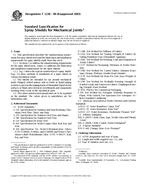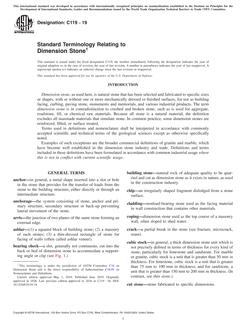1.1 This standard is for use in calculating the weight and volume of benzene, toluene, mixed xylenes, styrene, ortho-xylene, meta-xylene, para-xylene, cumene, ethylbenzene, 148.9 to 176.7°C and 176.7 to 204.4°C aromatic hydrocarbons, and cyclohexane. A method is given for calculating the volume at 15°C and 20°C from an observed volume at t°C. Table 1 lists the density in grams per cubic centimetre at 15°C and 20°C for high purity chemicals.
1.2 Calculated results shall be rounded off in accordance with the rounding-off method of Practice E 29.
1.3 The values stated in SI units are to be regarded as standard. No other units of measurement are included in this standard.
1.3.1 A complete inch-pound unit companion standard has been developed in Test Method D 1555.
1.4 This standard does not purport to address all of the safety concerns, if any, associated with its use. It is the responsibility of the user of this standard to establish appropriate safety and health practices and determine the applicability of regulatory limitations prior to use.
TABLE 1 Physical Properties
| Product | Freezing Point °C |
Boiling Point °C |
Density in Vacuo at 15°C g/ccA,B,C |
Density in Air at 15°C g/ccD |
Density in Vacuo at 20°C g/ccC,E,F |
Density in Air at 20°C g/ccD |
|---|---|---|---|---|---|---|
| Benzene | 5.6 | 80.1 | 0.88431 | 0.88324 | 0.87908 | 0.87801 |
| Cumene | -96.1 | 152.4 | 0.86586 | 0.86479 | 0.86160 | 0.86053 |
| Cyclohexane | 6.6 | 80.7 | 0.78317 | 0.78209 | 0.77849 | 0.77741 |
| Ethylbenzene | -95.0 | 136.2 | 0.87126 | 0.87019 | 0.86685 | 0.86578 |
| Styrene | -30.6 | 145.2 | 0.91028 | 0.90922 | 0.90586 | 0.90480 |
| Toluene | -95.0 | 110.6 | 0.87147 | 0.87040 | 0.86686 | 0.86579 |
| m-Xylene | -47.9 | 139.1 | 0.86831 | 0.86724 | 0.86408 | 0.86301 |
| o-Xylene | -25.2 | 144.4 | 0.88387 | 0.88280 | 0.87968 | 0.87861 |
| p-Xylene | 13.3 | 138.3 | 0.86503 | 0.86396 | 0.86076 | 0.85969 |
A Obtained from Method D 1555 – 04a by multiplying the chemical’s 60°F density by the volume correction factor for 59°F.
B Specific Gravity at 15°C is not presented in this table as it is unnecessary to this standard. If needed, divide 15°C density in g/cc by 0.999102 g/cc. See Appendix X1.
C g/cc can be converted to kg/1000L or kg/m³ by multiplying by 1000.
D Produced using g/cc = (Density · 1.00014992597 − 0.00119940779543) and rounding to 5 decimal places. See Appendix X2.
E Obtained from Method D 1555 – 04a by multiplying the chemical’s 60°F density by the volume correction factor for 68°F.
F Specific Gravity at 20°C is not presented in this table as it is unnecessary to this standard. If needed, divide 20°C density in g/cc by 0.998206 g/cc. See Appendix X1.
Note – Densities (or weights) “in vacuo“ represent the true density (or weight) if measured in a vacuum without the buoyancy effect of air acting on the liquid. It is representative of the actual amount of product present. Densities (or weights) “in air“ represent what would actually be measured on a scale. The difference is on the order of 0.13 %. Modern densitometers measure density in vacuo and the ASTM and API recommend the use of in vacuo densities (or weights); however, the purchaser and seller should agree on which to use in their transactions.
Product Details
- Published:
- 02/01/2008
- Number of Pages:
- 10
- File Size:
- 1 file , 120 KB
- Redline File Size:
- 2 files , 330 KB


